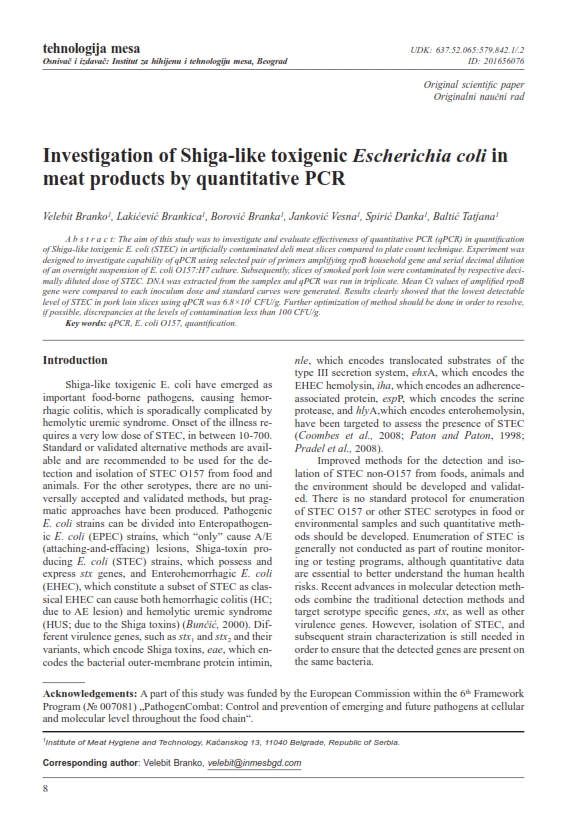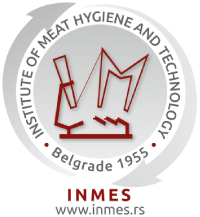Investigation of Shiga-like toxigenic Escherichia coli in meat products by quantitative PCR
Abstract
The aim of this study was to investigate and evaluate effectiveness of quantitative PCR (qPCR) in quantifi cation of Shiga-like toxigenic E. coli (STEC) in artifi cially contaminated deli meat slices compared to plate count technique. Experiment was designed to investigate capability of qPCR using selected pair of primers amplifying rpoB household gene and serial decimal dilution of an overnight suspension of E. coli O157:H7 culture. Subsequently, slices of smoked pork loin were contaminated by respective decimally diluted dose of STEC. DNA was extracted from the samples and qPCR was run in triplicate. Mean Ct values of amplified rpoB gene were compared to each inoculum dose and standard curves were generated. Results clearly showed that the lowest detectable level of STEC in pork loin slices using qPCR was 6.8×10
CFU/g. Further optimization of method should be done in order to resolve, if possible, discrepancies at the levels of contamination less than 100 CFU/g.





